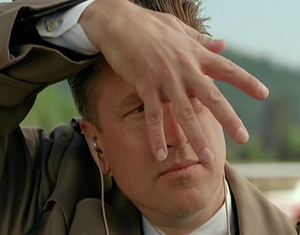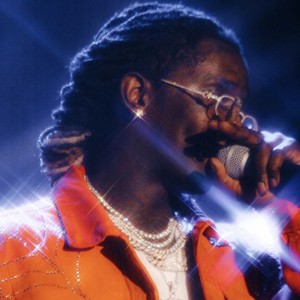 chili· edited
chili· editedJust realized that I've been listening to a remixed version of this album from the jump
Only Apple Music seems to have the original mixes made by Teo on streaming
DK which one I prefer. The bass on the remix is a lot more pronounced, which is kinda nice because the album kind of thumps at parts?
but the guitar is mixed very loudly in comparison on the new mix. Plus some of the horn effects (echo, reverb) used on Miles’ trumpet sound different hereBut I find some of the splices/edits on Teo's version are a lot more subtle, and you hear the keys a lot more on the OG version
Damn, I’ve only listened to BB on Spotify. Is that the remixed version? Mind linking me where you learned about this? Would love to learn more.
 Mr_P
Mr_PDamn, I’ve only listened to BB on Spotify. Is that the remixed version? Mind linking me where you learned about this? Would love to learn more.
forums.stevehoffman.tv/threads/miles-davis-bitches-brew-original-and-remix-releases.1174481
Also, this article here: jazztimes.com/features/profiles/miles-davis-and-the-making-of-bitches-brew-sorcerers-brew
With regard to the issues that Macero raised concerning remixing and remastering, much of the Miles Davis music issued on CD by Sony during the late ’90s has undergone this process, including all four boxed sets released to date. The triple-Grammy winning Miles Davis & Gil Evans: The Complete Columbia Studio Recordings, as well as Miles Davis & John Coltrane: The Complete Columbia Recordings, 1955–1961, were remixed from three tracks, and The Miles Davis Quintet, 1965–1968 from four tracks by Sony staff engineer Mark Wilder. The small amount of tracks meant that Wilder’s freedom to change the nature of the music was limited. However, B****es Brew was recorded on eight-track, and involved multitudes of complex edits and intricate sound effects. This made it more difficult to reconstruct the original version in a remix, and gave the remixer much more freedom to impose his own vision. In addition, some of the original effect equipment, like the Teo One, was not available anymore, making an exact replication even harder. Finally, Wilder and Belden decided to make some fundamental changes to the sound and nature of the mix, leaving themselves open to accusations similar to those aimed at one time at the restorers of the Sistine Chapel.
“Let me make clear that when Sony told me that they wanted me to recreate the whole album, I knew immediately that we couldn’t do any tinkering or release alternative takes or extend pieces,” Belden explained in response. “I did not want to play Teo Macero. Instead, we wanted the boxed set to flow seamlessly. That is why we had to remix all the material. The two-track masters for the original B****es Brew album were in bad shape, and there was a lot of disparity between them and the other material, whereas the previously unreleased stuff had not been mixed at all. Moreover, for the original LP they boosted the bottom and cut out the high end, taking out a lot of clarity. We put that clarity back in. We also decided to try to recreate what the musicians would have heard in the studio. There were always two distinct Fender Rhodes players, so we wanted to make sure that Chick Corea was always on the right and the guest on the left. That gives a sense of continuity. And we wanted to bring out the sound of Miles’ trumpet and make it sound more in the pocket, the way you would have heard it during studio playbacks. We wanted to bring out the natural interplay between the musicians. At the same time we followed Teo’s edits as faithfully as we could.”
“Of course it’s much more of a challenge to remix eight-tracks,” Wilder agreed. “But I was able to get a very accurate approximation of the original mixes. We tried to pay homage to Teo’s original edits and mixes as much as we could, but we also tried to bring out the musicality of the sessions. Those guys played some killing stuff that got a little lost in the technology of the mix and the postproduction. So yes, we tried to create a feeling of people playing music together. The musicality of what occurred during these sessions was paramount for us, and we wanted to remove some of the original mix technology to bring this out. They had made some very wild fader movements during the mix that we couldn’t replicate anyway. But at the same time there are those signature things that were done during the mix, the slap tape echoes on Miles’ trumpet, that we tried to replicate as best as we could. We would run my mixes and edits against the original LP version, and sometimes we’d compare with my version in one speaker and the original in the other to make sure that there were no edits that we had missed or mistimed. We worked amazingly hard on this.”
"I suspect they recorded on an Ampex eight-track, but I played back on a Studer one-inch eight-track, no Dolby, and mixed on an old Neve 8078 desk. We tried to pay homage to the original mixes as much as we could, but we also tried to bring out the musicality of the sessions. The musicality of what occurred during these sessions was paramount for us, and we wanted to remove some of the original mix technology to bring this out. They had made some very wild fader movements during the mix, which we couldn't replicate anyway."
"But, at the same time, there are those signature things that were done during the mix that we tried to replicate. We tried to use the same equipment as they used in 1969. We still have the original EMT plates from CBS at the time. There was also a custom-made device called the Teo 1, which was a multiple slap tape machine. It had a tape loop with one record head and at least four playback heads, but it's no longer in our possession. So, in order to duplicate those effects, which were often used on the trumpet, we had to use multiple delay devices."
Astonishingly, given that the record company blurb was hailing the 20-bit digital mixes that Wilder was supposed to have performed, he actually did all the edits in a***ogue, using razor blades on his two-track mixdowns.
Wilder gave the lowdown: "Most of Macero's edits were well done and not difficult to replicate. There was no benefit in putting everything in the Sonic Solutions. Instead of building things up piece by piece in the Sonic Solutions, we were doing it live in a***ogue. That gives you a much cleaner signal path, and makes it easier to bring out the liveness of the performances. I did use the Sonic Solutions a lot on the Miles & Gil boxed set, because, on Miles Ahead, there were orchestral sessions on which Miles only played certain sections. They were recorded to stereo, and they later overdubbed him on the missing sections, but in doing so reduced the orchestra to mono."
"So, with the computer, I was able to strip off Miles' overdubbed solos and paste them into the original stereo orchestra tracks, cutting the solos up and moving the phrases around, so that the phrasing is still accurate and in time with the orchestra. That was strange and very hard work. But, for the B****es Brew box, we did only a few edits in Sonic Solutions, and mostly I edited the two-track tape mix. I then mastered that straight to a 24-bit Sony PCM9000 MO recorder, using a mastering technique called AB, where you have two sets of EQs, compressors, gain stagers and so on, and run the master live, and add effects using a move list."
Phrases like “removing some of the original mix technology” or “recreate what the musicians would have heard in the studio” will alarm purists. But as always, the proof of the pudding is in the eating, and from this perspective the work of Belden and Wilder is more than vindicated. All original edits are retained (although the new version of “Pharaoh’s Dance” curiously loses four seconds that were in the original version, 08:29 to 08:33) and the instrumental balance of the mixes on The Complete B****es Brew Sessions does not sound significantly different from those of the original album. The sound is greatly improved, however, displaying more aliveness, depth, and detail, partly because the Dolby that suppressed the high end (as well as the hiss) in the original is removed. There’s a pleasant roundness to the new sound that was missing in the sometimes thin and abrasive-sounding original.
Belden and Wilder also succeeded in their aim of bringing out the interplay between the musicians. The improved high end especially has added a transparency that makes it easier to distinguish between the various percussion instruments, and to imagine oneself in the studio with the musicians. It seems like a cloud has lifted from the recordings, and some extra hiss is a small price to pay. Macero strongly criticized the new mixes, complaining that Miles sounded only “one inch tall,” but the overall consensus, including from the musicians who played on the sessions, is that the new mixes sound excellent. The parallel with the restoration of the Sistine Chapel that appears apt is that of the brighter colors that emerged, which initially shocked traditionalists.
